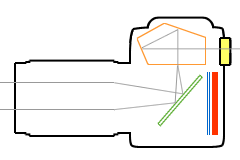This is all of my foto enjoy
photography Tech
Amazon
Wednesday, March 16, 2011
Sunday, March 6, 2011
Capture every moment of your adventure with the new EOS 600D
Capturing stunning images and Full HD video has never been easier, thanks to a range of automatic shooting modes that beginners can use to instantly express their creativity. A Feature Guide has been added to the user interface to help you learn about the camera as you use it, helping to develop your photography skills. With an unrivalled range of EF lenses, Speedlites and other accessories to enhance your shooting, the EOS system holds the key to the perfect shot – wherever your journey takes you, and whatever the scene before you.
First-class image quality
The EOS 600D provides all the tools to capture beautiful stills and HD movies. Amazing picture detail is provided by a high-resolution 18 Megapixel (MP) APS-C CMOS sensor, which combines with 14-bit DIGIC 4 processing so you can capture the wonder of a beautiful blue sky and enjoy exceptionally smooth gradients between colours. The camera’s low light shooting capability enables you to achieve clear, natural images in darker conditions, with an ISO range of 100-6400 that can be further expanded to 12800.
Great for shooting pets, children or wildlife, the EOS 600D allows high-speed shooting at 3.7 frames per second (fps), enabling you to capture fast-moving action. Each shot will be captured in sharp detail thanks to the 9-point Auto Focus system, which can track subjects using the auto focus points across the frame. Even more accurate focusing is providing by an extra-sensitive central AF Sensor, while the iFCL Metering system from the semi-professional EOS 7D features a 63-zone Dual-layer metering sensor, helping you to ensure your shot is correctly exposed, even in difficult lighting conditions.
Easy shooting, amazing results
New fully-automatic Scene Intelligent Auto mode makes it easy for you to capture outstanding quality shots with almost no effort. Allowing you to focus exclusively on framing your picture, Scene Intelligent Auto analyses the scene for you and automatically picks the best settings to capture it. Your images will look better than ever thanks to a new ‘Auto’ Picture Style, which automatically makes fine adjustments to colours while you focus on capturing the scene you want.
The EOS 600D also makes it easy for you to instantly add creativity to your pictures. Change the atmosphere of a scene with Basic+, which allows you to pick the mood you want to achieve from one of eight options, including ‘Warm’, ‘Cool’ or ‘Intense’. Whether you’re shooting landscapes, portraits, or close-up macro shots, Basic+ makes it easy to capture the perfect image.
Simple, flexible, artistic
Ideal for beginners, a Feature Guide has been added to the EOS 600D’s menu system, offering a brief description of each key setting and its effect, helping you learn more about the camera as you use it.
You can also shoot overhead, at ground level or around corners with the EOS 600D’s
Vari-angle 7.7cm 3:2 ratio ClearView LCD. Rich on-screen detail is provided in 1.04 million-dot resolution, and the side-mounted hinge allows users to comfortably and creatively shoot from a range of unusual angles, or when using a tripod. A smudge-resistant fluorine coating and three anti-reflection coatings also ensure you can see the LCD in clear detail, wherever you are.
Allowing you to apply your own stamp to your shots, the EOS 600D is perfect for experimenting with different Creative Filters. Fish-eye-Effect creates a barrel-shaped distortion similar to a fish-eye lens, and you can instantly turn a scene into a small-scale model with Miniature Effect. Toy Camera Effect, Grainy B/W and Soft Focus offer additional options, allowing you to experiment with your images in a number of different ways.
Capture stunning detail with EOS movie
Capture your memories in superb clarity with Full HD (1080p) movie mode, while a dedicated movie shooting mode means you can switch between stills and HD video instantly. You can also reach distant subjects using new Movie Digital Zoom function, which crops the centre of the sensor from 3x to 10x while still maintaining Full HD quality – great for capturing wildlife on a safari holiday.
Enabling you to capture more engaging videos, Video Snapshot mode shoots video in two, four, or eight second segments, creating clips that are short, easy to edit and of similar lengths to clips used in most TV programmes. As they are recorded, the clips are saved to a Video Snapshot Album and combined into one movie. A soundtrack can be added by choosing from tracks uploaded to the camera and the result viewed on the camera’s LCD, or on an HDTV via the built-in mini HDMI connection.
The EOS system – unrestricted creativity
As your skills develop, the EOS 600D grows with you. As part of Canon’s EOS range, the camera is compatible with the unrivalled selection of EF lenses and a range of accessories, so you can add to your kitbag as your ability and style develops. Over 60 lenses provide you with unlimited creative possibilities: wide-angle lenses capture sweeping landscapes, macro lenses capture the most intricate beauty of the tiniest creatures, and telephoto lenses make distant scenes appear as if they are right in front of you.
Using Canon’s range of Speedlite flashes and the EOS 600D’s Integrated
Speedlite Transmitter, you can also experiment with different lighting techniques, or use your flash off-camera, to give your subject or scene a completely different look and feel. With the Easy Wireless function, the camera will also take care of the complicated settings whilst you focus on framing and lighting your scene as you wish.
Introducing the new EF-S 18-55mm f/3.5-5.6 IS II
Launching with the EOS 600D is the EF-S 18-55mm f/3.5-5.6 IS II – a new kit lens that provides excellent performance for beginners. A lightweight construction makes it easy to carry, and Canon’s acclaimed optical Image Stabilization also minimises the risk of blur, allowing photographers to use shutter speeds 4 stops slower while still maintaining a blur-free shot. The EF-S 18-55mm f/3.5-5.6 IS II will succeed the existing EF-S 18-55mm f/3.5-5.6 IS in Canon’s lens line-up.
EOS 600D – key features:
- 18-megapixel CMOS sensor
- Scene Intelligent Auto mode
- Full-HD EOS Movie
- On-screen Feature Guide
- 3.7fps continuous shooting
- Wide-area 9-point AF
- 1,040k-dot vari-angle 7.7cm (3.0”) screen
- Basic+ and Creative Filters
- Built-in wireless flash control
Technologies explained
Canon CMOS sensorExclusively designed and manufactured by Canon to work in combination with its own DIGIC processors, Canon’s CMOS technology integrates advanced noise reduction circuitry at each pixel site, delivering virtually noise-free images. In comparison with CCD technology, the lower power consumption characteristics of Canon’s CMOS sensors also contribute to longer battery life.
Signal conversion in Canon’s CMOS sensors is handled by individual amplifiers at each pixel site. Unnecessary charge transfer operations are avoided, vastly speeding up the process of getting the signal to the image processor. Noise is reduced, power consumption is limited and faster frame rate potential is increased.
DIGIC 4
Image data captured by the CMOS sensor is processed by Canon’s purpose-built
DIGIC 4 image processors before being written to memory card. DIGIC technology uses advanced image processing algorithms to ensure precise, natural colours, tonal gradation, accurate white balance, and advanced noise reduction. Ultra-fast processing speeds result in highly responsive camera operation and near-instant start-up times.
DIGIC chips work with a high speed image buffer, reading, processing, compressing and writing image data fast enough to keep the buffer clear during long continuous shooting bursts. In addition, because DIGIC 4 integrates all key processing functions, power consumption is kept to a minimum.
iFCL metering system with 63-zone Dual-layer Metering sensor
The iFCL system uses focus, colour and luminance information to determine consistently exposed shots. All focus points provide distance information to the metering system to determine the location of the subject and allow the algorithm to weight the exposure accordingly.
Both the EOS 600D and EOS 1100D models feature a metering sensor with 63 zones, compatible with all nine AF points. Typically, metering sensors are more sensitive to red subjects which can lead to overexposure. The EOS 600D and EOS 1100D counter this with the dual layer sensor, which has one layer sensitive to red and green light and one that is sensitive to blue and green light. The metering algorithm then compares the level of the two layers and adjusts the meter reading accordingly.
EOS Integrated Cleaning System
The new EOS 600D features the EOS Integrated Cleaning System, used to combat sensor dust in three important ways: Reduce, Repel and Remove.
- Reduce - Internal camera mechanisms are designed to minimise dust generation. The redesigned body cap prevents dust generation through wear on the cap itself
- Repel - Anti-static technologies, including a magnesium fluoride coating, are applied to the low-pass filter covering the front of the sensor so as not to attract dust
- Remove - A Self-Cleaning Sensor Unit uses hi-frequency vibrations to shake dust from the infrared filter for a period of approximately one second after each start up. For instant shooting after power up, this feature is disabled immediately as the shutter release is depressed
Vari-Angle Clear View LCD (EOS 600D only)
The EOS 600D features a 7.7cm (3.0”) 3:2 Vari-Angle Clear View LCD screen offering approximately 1.04 million dot resolution – allowing high-quality viewing of images, and focus checks, in playback. With a wide 160º angle of view, images on the Clear View LCD can be easily reviewed in a vast range of environments with reduced ghosting and reflections, thanks to three anti-reflection coatings and a smudge-resistant fluorine coating. Marks on the screen are prevented and colours on the monitor appear natural and close to the sRGB colour space. The vari-angle screen has been designed to open sideways, enabling photographers to shoot from unusual angles, even while the EOS 600D is attached to a tripod or battery grip. The screen flips out 175° and can then rotate 90° forwards or 180° backwards, allowing the photographer to view the screen from low or high angles, and even from in front of the camera.
EOS Movie
EOS Movie allows users to record Full HD (1920x1080p) movies on the EOS 600D and HD (1280x720p) movies on the EOS 1100D. The EOS 600D offers full manual control of exposure and frame rates of 30, 25 and 24 fps at full resolution, with 60 and 50 fps available at 720p resolution. The EOS 1100D has a choice of 30 and 25 fps frame rates.
When filming Full HD footage with the EOS 600D, Movie Digital Zoom can be used to magnify the centre of the sensor by 3-10x while maintaining Full HD quality.
EOS Scene Detection Technology (EOS 600D only)
EOS Scene Detection Technology automatically analyses faces, brightness, movement, contrast and distance in the scene, with information provided as feedback to the Scene Intelligent Auto mode.
Scene Intelligent Auto (EOS 600D only)
Scene Intelligent Auto takes the information gathered by the
EOS Scene Detection System and determines the best settings to capture the scene. For example, when shooting portraits, the settings are adjusted to make the skin appear more natural.
Picture Styles
Picture Style presets can be likened to different film types – each one offering a different colour response. Within each selectable preset, photographers have control over sharpness, contrast, colour tone and saturation. The camera’s Standard Picture Style is designed to deliver immediately-usable JPEG images without need for additional processing. When shooting RAW images Picture Styles can be revised with Canon’s Digital Photo Professional software.
The presets available with both the EOS 600D and EOS 1100D are:
- Standard: For crisp, vivid images that don’t require post-processing.
- Portrait: Optimises colour tone and saturation and weakens sharpening to achieve attractive skin tones.
- Landscape: For punchier greens and blues with stronger sharpening to give a crisp edge to mountain, tree and building outlines.
- Neutral: Ideal for post-processing.
- Faithful: Adjusts colour to match the subject colour when shot under a colour temperature of 5200K.
- Monochrome: For black and white shooting with a range of filter effects (yellow, orange, red and green) and toning effects (sepia, blue, purple and green.
Basic+
Basic+ is a creative imaging function that was first introduced in the EOS 60D, which makes it easier to create the desired image effects when shooting a scene. With Basic+, photographers have the option to apply a creative intent to their images whilst using the scene-based modes.
- Shoot by ambience: exposure compensation and white balance are adjusted according to preset styles to create ambience or tone in the image
- Shoot by lighting or scene type: a simplified form of white balance, which allows new digital photographers to change the white balance settings according to more understandable terms such as “Daylight”, “Shade”, “Cloudy”, “Sunset”, “Tungsten light” and “Fluorescent light”
Auto Lighting Optimiser analyses the image and selectively adjusts the brightness to achieve a more even result. For example, when a person is backlit, ALO detects the face and increases its brightness to ensure a more pleasing image.
Lens peripheral illumination correction
The lens peripheral illumination correction function uses the power of the DIGIC 4 image processor to improve image quality by maintaining evenness of illumination from corner to corner, even when shooting wide open with a zoom lens. When shooting in RAW this correction can be further adjusted using
Digital Photo Professional.
Highlight Tone Priority
With Highlight Tone Priority the dynamic range of the highlight tones is extended. The gradation between 18% greys (standard exposure) and the highlights are improved, reducing loss of detail in highlights. This enables a picture with a large proportion of highlights, such as a brightly-lit bride in her wedding gown, to show greater detail in the white and grey areas of the photo, making the image more attractive and natural.
Feature Guide
The Feature Guide acts as an on-board guide by displaying a simple description of each mode and the functions on the Quick Control Screen.
Creative Filters (EOS 600D only)
EOS 600D provides a range of creative effect filters which can be applied to RAW images and all JPEG images. Since the filter can be applied after the shot is taken, users can apply different filters to the same image and see the effects:
- Fish-eye effect: Creates a barrel-shaped distortion similar to a fish-eye lens. The effect can be adjusted, and, depending on the level of distortion, the image periphery may be cropped.
- Grainy B/W: Creates a grainy, black-and-white image. The effect can be emphasized by adjusting the contrast.
- Soft focus: Produces a soft result. This can be increased by adjusting the blur.
- Toy camera effect: Provides colour cast typical of toy cameras. The four corners are also darkened. The image looks soft with a subtle grainy look. The colour cast can be changed to cool or warm colours.
- Miniature effect: Can be set by the user to make part of the image look sharp. The orientation (vertical or horizontal) of the area can be changed by pressing the INFO button.
The Video Snapshot feature enables the user to capture short video clips of 2, 4 or 8 seconds in length. These short snapshots are then stitched together into one file as a Video Snapshot Album, creating a dynamic, fast-paced movie sequence. Once video clip duration has been selected, every time the Movie shooting button is pressed a video clip of that length will be captured. For example, if a 4 second Video Snapshot is selected, the Video Snapshot Album will be created consisting of 4-second movie clips. This creates a much more engaging movie and encourages the user to think about the shots they take.
When playing a Movie, Video Snapshot Album or Slideshow, background music (BGM) can be applied, whether on the camera’s screen, or on a larger HDTV using the camera’s HDMI connection. To do this, users must convert audio files*1 to the supported .WAV format, before using EOS Utility software to upload the files to the camera’s SD card ready for selection during playback. A choice of five music tracks supplied with the camera can also be used.
Digital Photo Professional Software
Digital Photo Professional (DPP) software provides high speed, high quality processing of lossless RAW images. Processing with Digital Photo Professional allows real-time display and immediate application of image adjustments, giving control over RAW image variables such as white balance, dynamic range, exposure compensation, noise reduction and colour tone – plus the ability to view Auto Focus points on an image and apply un-sharp mask sharpening. The Lens Aberration correction tool allows precise correction of different types of distortion caused by certain lenses. Newly added is a set of distortion corrections for use with the EF 8-15mm f/4L USM Fisheye. These corrections allow you to produce fisheye images for different uses.
- Emphasize Linearity: Converts the image to a ‘Central Projection’ style image. This creates a full frame image from a circular fisheye image.
- Emphasize Distance: This converts the image into an ‘Equidistant Projection’ image. This method preserves distance relationships between objects, but removes much of the distortion. It is particularly useful for creating star maps and solar path diagrams.
- Emphasize Periphery: This converts the image into a ‘Stereographic Projection’ image. This allows positional relationships on a spherical surface to be displayed correctly, such as an image of a globe.
- Emphasize Centre: This converts the image to an ‘Orthogonal Projection’ image, enlarging the centre of the image. This is useful for city planners to measure the luminance of an area by the sky to ensure adequate lighting.
Digital Photo Professional supports sRGB, Adobe RGB, ColorMatch RGB, Apple RGB and
Wide Gamut RGB colour spaces. ICC (International Colour Consortium) profiles can be attached to TIFF or JPEG images when converted from RAW. This allows faithful reproduction of colours in software applications that support ICC profiles, such as Adobe Photoshop. For improved efficiency, a set of image adjustments can be saved as a recipe and applied.
EOS Utility
The latest version of EOS Utility provides essential support for Live View remote shooting (with the ability to overlay an image to assist with alignment of subsequent shots during product photography), camera configuration and image transfers. Tightly integrated with Digital Photo Professional, EOS Utility can be configured to monitor ‘hot’ folders, automatically renaming and moving incoming images to a structured file system. Images can also be tagged with EXIF data, including copyright information. Newly added is the ability to register background music, with users now able to add or remove .WAV format files from the playlist used by the camera*1.
Picture Style Editor
Picture Style Editor allows photographers to create individual Picture Styles that meet their personal requirements. Each Picture Style contains detailed information on how specific colours should be represented within an image. Once new Picture Styles have been created, they can be uploaded directly into the camera and applied to JPEG or RAW images. When working with RAW files in DPP, both personal Picture Styles and predetermined Picture Styles can be adjusted.
ZoomBrowser EX (PC)/ImageBrowser (MAC)
ZoomBrowser EX/ImageBrowser is designed to give photographers a quick and easy way of managing their images. Basic JPEG editing functionality enables users to adjust image brightness and colour balance, with an in-software connection to DPP for RAW image editing. Users can select, rename and resize multiple images at once, set star ratings and organise images by shooting date, making it simple to manage large image libraries. Photographers can also select, add comments and then print images via a range of simplified printing options, and direct uploads to
CANON iMAGE GATEWAY enables image sharing via personal online photo albums.
ZoomBrowser EX/ImageBrowser also offers support for video editing, including a new Video Snapshot Edit Task that makes it easy for users to manage, edit and share Video Snapshot Albums.
Video Snapshot Edit Task
This feature allows Video Snapshot Albums to be edited using a computer. Individual snapshots can be removed or reordered, and a background music track can also be added*1. The resulting file can be uploaded to YouTube™ quickly and easily using a new YouTube™ upload task.
*3Copyright laws in your country may prohibit the use of your recorded images or copyrighted music and images with music in the memory card for anything but private enjoyment.
Source
http://www.dpreview.com/news/1102/11020720canoneos600d.asp
Best Buy
Additional images
 |  |
 |  |
 |  |
 |  |
Monday, January 31, 2011
Camera Shop in indonesia
JAKARTA
JPC Kemang
have all kind of camera
EK Gadget
Roxy & Poins Square Lebak Bulus
the price is good
KOTARAYA
Glodok Plaza Shopping Center Lt.Dasar No.70-71,
(021) 62302697, (021) 62302687
email: kotaraya@cbn.net.id
Mangga Dua
have all item but a cost too much
Aneka Foto
Metro Atom Plaza Lt. 2
Blok AKS No. 19-20
Pasar Baru, Jakarta Pusat 10710
Telp: (021) 345-7966, 345-7933, 345-5544
Fax: (021) 385-4228
Email: aneka.foto@yahoo.com
Aneka Jaya Foto
Harco Plaza Lt. Dasar No. 138
(Depan Escalator)
Pasar Baru, Jakarta Pusat 10710
Telp: (021) 345-2020, 345-2210, 345-1956
Fax: (021) 384-6326
Email: aneka.foto@yahoo.com
www.anekafoto.com
ASTRA (khusus nikon)
ITC mangga 2 near console game shop
the price is good and warranty alta
Oktagon
Gunung sahari near golden
you can buy it whit credit and the price is good
focusnusantara
cost too much and the shop owner is not too nice
Bayang Foto
Jl. RS. Fatmawati No. 26D Pondok Labu, Jakarta Selatan
Telp: 021- 91979246 / 0813-82589015
http://www.bayangfoto.com
Origin Supplies
Hotel Dusit Orion Mangga Dua Lt.2 No.30
(021) 6018516 / 6018510
Bursa Kamera Profesional
bkpbenhil@yahoo.com
Wisma Benhil Lt.1C 6, Jl. Jend Sudirman Kav-36
(021) 5736688 / 5736038camera Profesional Cabang Fatmawati ( BKP Fatmawati) address Gedung ITC Fatmawati Ruko no.28 Jl.Fatmawati raya Jakarta Selatan Tel (62-21)7207976
seasonsfoto
Jalan Wolter Monginsidi #12E - 14A, Kebayoran Baru, Jakarta Selatan
Telp. +6221-72787247 / +6221-72800452 Fax. +6221-7224024
tokocomzone
ITC FATMAWATI, LT.2 NO.45 JL. RS. FATMAWATI NO.39 - JAKARTA SELATAN
PH: (021) 68664901, 7246835, 70623037 SMS: 0813-17587662
mitraphotography
nickodarwis@yahoo.com
bekasi barat near fly over pasar kranji
TUSTEL [dot] COM
tusteldotcom@yahoo.com
online shop
DKI Jakarta
V3 Technology
info@v3technology.net
Mal Ambasador Lt. UG/47 Jl. Prof. Dr. Satrio - Kuningan Jakarta - 12940 ph.021-70777390 / 7033 4904 / 7033 4905 fax. 021 - 5793 1044 email : info@v3technology.net YM: v3_technology@yahoo.com We accept : VISA / MasterCard / Citibank / Citibank Eazypay / All Major Debit card.
Zenith Photo
al_gobeto@yahoo.com
E-Center Lippo Supermal Karawaci Blok FF C3A/6 Tangerang
Banten
BANDUNG
Kamal
jl braga
Titan
bec
gudangkamera
tirtayasa
Oase
jln cemara
ko gleen the name of the owner
Jonas
jl banda
Seruni
jl merdeka
jln morce
servis n jual bekas. herri sama iyong..
jln abc...
there 3 - 4 lapak....second
Yogyakarta
ISTANA FOTO
Jl. Kyai Mojo Jogja
Duta Photo
Central Photo
Jl. Solo
GRHA WISNO
JL. Diponegoro (Barat TUGU) dealer resmi CANON.
ARTHA
JL. Kaliurang (Utara Selokan Mataram)
shop near jalan SOLO (urip sumoharjo)
for SERVIS
GRHA WISNO - di JL. Diponegoro (Barat TUGU) dealer resmi CANON.
SURABAYA
tokodigital
Ambengan Plaza B-23
Jl. Ngemplak no 30, Surabaya
Sentra Digital
sales@sentradigital.com
Plaza Marina Lt. 2 Blok A-05. Jl.Margorejo Indah no.97 - 99 Surabaya
Jawa Timur
SINAR BAHAGIA
Jl. Kramat Gantung 63, Surabaya 60174
Phone:62-31- 5342513, 5322844, 5475527. Fax:62-31-5454974
SUMBER BAHAGIA
Jl Kramat Gantung 20
SURABAYA 60174
Phone : 031-5344995, 031-5459382, 031-5466028
Jl Jend Basuki Rachmad 2-12 Plaza Tunjungan III 3/II
SURABAYA 60271
Phone : 031-5468166
DENPASAR
1. Fuji Profesional Photo (tp plangnya tulisan NIKON gede )
Jl.Diponegoro No.84,
Denpasar
Telp. (0361) 226965 / 236829
Fax. (0361) 226965
after Rimo Kiri jalan
2. ProDigital
Jl.Diponegoro No.148,
Denpasar
Telp. (0361) 7923080
Fax. (0361) 222850
JPC Kemang
have all kind of camera
EK Gadget
Roxy & Poins Square Lebak Bulus
the price is good
KOTARAYA
Glodok Plaza Shopping Center Lt.Dasar No.70-71,
(021) 62302697, (021) 62302687
email: kotaraya@cbn.net.id
Mangga Dua
have all item but a cost too much
Aneka Foto
Metro Atom Plaza Lt. 2
Blok AKS No. 19-20
Pasar Baru, Jakarta Pusat 10710
Telp: (021) 345-7966, 345-7933, 345-5544
Fax: (021) 385-4228
Email: aneka.foto@yahoo.com
Aneka Jaya Foto
Harco Plaza Lt. Dasar No. 138
(Depan Escalator)
Pasar Baru, Jakarta Pusat 10710
Telp: (021) 345-2020, 345-2210, 345-1956
Fax: (021) 384-6326
Email: aneka.foto@yahoo.com
www.anekafoto.com
ASTRA (khusus nikon)
ITC mangga 2 near console game shop
the price is good and warranty alta
Oktagon
Gunung sahari near golden
you can buy it whit credit and the price is good
focusnusantara
cost too much and the shop owner is not too nice
Bayang Foto
Jl. RS. Fatmawati No. 26D Pondok Labu, Jakarta Selatan
Telp: 021- 91979246 / 0813-82589015
http://www.bayangfoto.com
Origin Supplies
Hotel Dusit Orion Mangga Dua Lt.2 No.30
(021) 6018516 / 6018510
Bursa Kamera Profesional
bkpbenhil@yahoo.com
Wisma Benhil Lt.1C 6, Jl. Jend Sudirman Kav-36
(021) 5736688 / 5736038camera Profesional Cabang Fatmawati ( BKP Fatmawati) address Gedung ITC Fatmawati Ruko no.28 Jl.Fatmawati raya Jakarta Selatan Tel (62-21)7207976
seasonsfoto
Jalan Wolter Monginsidi #12E - 14A, Kebayoran Baru, Jakarta Selatan
Telp. +6221-72787247 / +6221-72800452 Fax. +6221-7224024
tokocomzone
ITC FATMAWATI, LT.2 NO.45 JL. RS. FATMAWATI NO.39 - JAKARTA SELATAN
PH: (021) 68664901, 7246835, 70623037 SMS: 0813-17587662
mitraphotography
nickodarwis@yahoo.com
bekasi barat near fly over pasar kranji
TUSTEL [dot] COM
tusteldotcom@yahoo.com
online shop
DKI Jakarta
V3 Technology
info@v3technology.net
Mal Ambasador Lt. UG/47 Jl. Prof. Dr. Satrio - Kuningan Jakarta - 12940 ph.021-70777390 / 7033 4904 / 7033 4905 fax. 021 - 5793 1044 email : info@v3technology.net YM: v3_technology@yahoo.com We accept : VISA / MasterCard / Citibank / Citibank Eazypay / All Major Debit card.
Zenith Photo
al_gobeto@yahoo.com
E-Center Lippo Supermal Karawaci Blok FF C3A/6 Tangerang
Banten
BANDUNG
Kamal
jl braga
Titan
bec
gudangkamera
tirtayasa
Oase
jln cemara
ko gleen the name of the owner
Jonas
jl banda
Seruni
jl merdeka
jln morce
servis n jual bekas. herri sama iyong..
jln abc...
there 3 - 4 lapak....second
Yogyakarta
ISTANA FOTO
Jl. Kyai Mojo Jogja
Duta Photo
Central Photo
Jl. Solo
GRHA WISNO
JL. Diponegoro (Barat TUGU) dealer resmi CANON.
ARTHA
JL. Kaliurang (Utara Selokan Mataram)
shop near jalan SOLO (urip sumoharjo)
for SERVIS
GRHA WISNO - di JL. Diponegoro (Barat TUGU) dealer resmi CANON.
SURABAYA
tokodigital
Ambengan Plaza B-23
Jl. Ngemplak no 30, Surabaya
Sentra Digital
sales@sentradigital.com
Plaza Marina Lt. 2 Blok A-05. Jl.Margorejo Indah no.97 - 99 Surabaya
Jawa Timur
SINAR BAHAGIA
Jl. Kramat Gantung 63, Surabaya 60174
Phone:62-31- 5342513, 5322844, 5475527. Fax:62-31-5454974
SUMBER BAHAGIA
Jl Kramat Gantung 20
SURABAYA 60174
Phone : 031-5344995, 031-5459382, 031-5466028
Jl Jend Basuki Rachmad 2-12 Plaza Tunjungan III 3/II
SURABAYA 60271
Phone : 031-5468166
DENPASAR
1. Fuji Profesional Photo (tp plangnya tulisan NIKON gede )
Jl.Diponegoro No.84,
Denpasar
Telp. (0361) 226965 / 236829
Fax. (0361) 226965
after Rimo Kiri jalan
2. ProDigital
Jl.Diponegoro No.148,
Denpasar
Telp. (0361) 7923080
Fax. (0361) 222850
Wednesday, January 19, 2011
What You Do When You Break Your Camera
Don’t Panic
As with any unfortunate event, the key is to not panic. Falling to pieces and getting overly emotional about the event will not help keep your mind clear and make the most of the situation. Panicking leads to other mistakes, which can be costly in their own right. Keep your cool! A bit of profanity is permissible.Grab The Pieces, All Of Them
Once you are finished with your (minor) freak out, because you didn’t listen to my first bit of advice, start picking up the pieces. Unless you are in a calm setting, such as at home in the kitchen, you are probably out in public and need to make sure all the bits are grabbed before they get scattered. Enlist help if need be. You never know which little piece will be helpful in getting things back together. Even if it looks unimportant, grab it.Take Out The Battery
If your battery hasn’t flown free from your camera and skittered half a mile away (I swear most camera batteries are built with self preservation instincts and fly free from a breaking camera at the first sign of trouble) now is a good time to take it out. If your camera is partially functioning, more damage can be done from parts trying to move when they don’t quite line up. I’l admit I haven’t always followed this advice. Which is why I now suggest this advice. Accept your fate and deal with it. Power off your camera completely to avoid additional damage.Grab Your Flash Card
I have actually sent back a camera for repair with the card still in it. This, again, comes from the first point. I got all freaked out about the damage and didn’t grab my card, even a few days later. The irony is I often hear people tell me, “If I dropped my camera in the lake, that’s that!” When in reality it often is not “that”. Your card is a solid state device and, barring electric jolt, will retain the images recorded to it. Corrosives will cause damage, but a quick dunk in a pool of water, while a bad thing for your camera and the electricity it carries, is not necessarily fatal to your images. Grab that card out and dry it off, completely. Heck, you may even have one interesting last image as your camera met its fate.Do No Harm
Guilty, yet again. I have tried to fix my semi-broken cameras before. That typically made them completely broken cameras. And made the repair bill higher. Unless you are a pro at this type of fixing, your expensive DSLR is not a good item on which to start learning about camera repair. Leave it to the pros.Check Your Warranty
Before you send in your camera for repair, they’ll want to know about your warranty. This starts with recording the information some place logical and easy to retrieve. Maybe in online email. Maybe on your cell phone (if you are on a trip). Maybe a tattoo. Whatever works for you, when you buy a camera, record this information for easy retrieval. I once failed to send in a computer for repair because I thought it was past the warranty and the reciept was burried in years of boxed paper. So I put it off for a month. When I found the receipt I learned I was now out of the warranty period, but I wasn’t when the incident occurred. Having an easy way to find this information will make life easier when it is already stressful.Also check to see what your warranty covers. Most won’t cover negligence (accidents) and other incidents. Know before you have something go wrong.
Check Your Insurance
If the warranty won’t cover an accident, it is possible a homeowners or renters insurance policy will. Again, make sure the information is easy to find and understand the limits before using it.Know Your Repair Options
Not everything needs to head back to the manufacturer’s factory. Local camera shops often offer repair and the service and price varies greatly. Most large brands will offer a free estimate before proceeding with a repair, much like a car mechanic should. In one incident I found the repair to be more than a replacement. In another (yes, I have dropped more than one camera) the repair cost was much less than I anticipated and I was pleasantly surprised. Ask around and get as many free estimates as you can if you have the luxury of time.Know You Can Rent While Repairs Happen
Often it is calming to know a rental option is available, either online or around the street corner. Being without a prized lens or body when a shoot is planned for the near future will cause a spike in blood pressure. Relax. While it will cost additional funds, there are options to make sure you can keep shooting until your gear comes back to you.Check eBay For Replacements
While you are waiting for your free estimate for repair (notice how I keep holding on to hope that your camera was not completely obliterated?) check eBay and other secondhand resources for replacements. Sometimes we fall in love with our gear and keep it for years beyond its production date. If it’s not available new, it may be available on the secondary market.Sell It, Don’t Trash It
If the camera or lens is a total loss, don’t just throw it in the trash to clog another landfill. Look again to eBay and other sites where broken equipment can be listed (with proper notation). One man’s trash is another’s treasure. Repair shops can scavenge usable parts off of the body and get them on other cameras which met a similar fate. Plus it is a chance to turn a complete loss into enough money to buy a beer to cry into.Move On
Sometimes broken stuff doesn’t come back to life. Sometimes it stays broken. The positive spin on this? It’s time to start shopping for a newer, better, faster, cooler camera!Friday, January 14, 2011
GE DV1
News Source :www.letsgodigital.org
GE DV1 digital camera : General Imaging is expanding its offerings with the all new GE DV1, the first GE HD digital video camera. The colorful, pocket-sized and waterproof GE DV1 features a convenient, built-in flip out USB plug for instantly connecting and uploading HD videos and photos to share. With full HD 1080p movie recording capabilities combined with a highly durable exterior, the GE DV1 is not only waterproof to 16 feet, but shockproof and dustproof which makes this video camera perfect for consumers to take anywhere. The GE DV1 is latest addition to the GE Active Series ofcameras
, and is now available in 5 bright colors including: lime green
, aqua blue, citrus orange, red velvet and graphite gray for a suggested retail price of $129.99.


GE DV1 waterproof digital camera
"We’re very excited to expand the GE camera line with our first full 1080p HD, handheld video camera," said Paul Meyhoefer, vice president of marketing and product planning, GIC. "With the rapid growth of social media, we understand the importance of documenting and sharing life’s moments in video online and at home with friends and family. The GE DV1 helps accomplish that, while giving consumers all the latest, convenient features they’ve come to expect from GE digitalcameras
."

GE DV1 camera features
The GE DV1 has many features that make it the ideal grab-and-go video camera :
• Rugged and durabledesign
- The GE DV1 is part of GE’s active series with a camera body designed for simple one-hand operation. Its waterproof up to 16 feet, shockproof up to five feet, and also dust proof, another added benefit for those on the go.
• USB connection - A built-in USB arm flips out, making it simple to upload and share photos and 1080p videos on anycomputer
instantly, without complicated software, accessories or cords.
• HD video recording - The GE DV1 records in high-definition 1080p quality video with the touch of a button. The built-in HDMI jack offers full HD output and easy connection to HD-compatible TVs.
• Crisp LCD monitor - The 2.5" LCD features Automatic Brightness Adjustment and ensures you can see maximum details on the screen, whether indoors, in bright sunlight or at night.

GE DV1 camera technologies
Optical Image Stabilization compensates for unwanted camera movement when capturing video, while Face Detection technology optimizes and provides the best possible shots of those in the videos and photos. A host of other video and photo modes give you the perfect shot whether under water, or in various lighting and action conditions.

GE DV1 battery & memory
• Internal battery - The built-in Lithium Ion battery provides up to 80 minutes of continuous video recording and can be charged via computer through USB connection or via the supplied adapter.
• SD and SDHC compatible - The GE DV1 supports SD and SDHC memory cards up to 32GB.

GE DV1 accessories included
• AC adapter
• USB extension cable
• Wrist Strap
• CD-ROM
• Manual
• Quick Start Guide
• Feature Guide
• Warranty Card

GE DV1 review, price & availability
The GE DV1 is latest addition to the GE Active Series of cameras, and is now available in 5 bright colors including: lime green, aqua blue, citrus orange, red velvet and graphite gray, at various online and in-store retailers for a suggested retail price of $129.99. As soon as we receive a GE DV1 test sample, we will publish a photo gallery with high resolution pictures, followed by an extensive GE DV1 review.

GE DV1 digital camera : General Imaging is expanding its offerings with the all new GE DV1, the first GE HD digital video camera. The colorful, pocket-sized and waterproof GE DV1 features a convenient, built-in flip out USB plug for instantly connecting and uploading HD videos and photos to share. With full HD 1080p movie recording capabilities combined with a highly durable exterior, the GE DV1 is not only waterproof to 16 feet, but shockproof and dustproof which makes this video camera perfect for consumers to take anywhere. The GE DV1 is latest addition to the GE Active Series of



GE DV1 waterproof digital camera
"We’re very excited to expand the GE camera line with our first full 1080p HD, handheld video camera," said Paul Meyhoefer, vice president of marketing and product planning, GIC. "With the rapid growth of social media, we understand the importance of documenting and sharing life’s moments in video online and at home with friends and family. The GE DV1 helps accomplish that, while giving consumers all the latest, convenient features they’ve come to expect from GE digital


GE DV1 camera features
The GE DV1 has many features that make it the ideal grab-and-go video camera :
• Rugged and durable

• USB connection - A built-in USB arm flips out, making it simple to upload and share photos and 1080p videos on any

• HD video recording - The GE DV1 records in high-definition 1080p quality video with the touch of a button. The built-in HDMI jack offers full HD output and easy connection to HD-compatible TVs.
• Crisp LCD monitor - The 2.5" LCD features Automatic Brightness Adjustment and ensures you can see maximum details on the screen, whether indoors, in bright sunlight or at night.

GE DV1 camera technologies
Optical Image Stabilization compensates for unwanted camera movement when capturing video, while Face Detection technology optimizes and provides the best possible shots of those in the videos and photos. A host of other video and photo modes give you the perfect shot whether under water, or in various lighting and action conditions.

GE DV1 battery & memory
• Internal battery - The built-in Lithium Ion battery provides up to 80 minutes of continuous video recording and can be charged via computer through USB connection or via the supplied adapter.
• SD and SDHC compatible - The GE DV1 supports SD and SDHC memory cards up to 32GB.

GE DV1 accessories included
• AC adapter
• USB extension cable
• Wrist Strap
• CD-ROM
• Manual
• Quick Start Guide
• Feature Guide
• Warranty Card

GE DV1 review, price & availability
The GE DV1 is latest addition to the GE Active Series of cameras, and is now available in 5 bright colors including: lime green, aqua blue, citrus orange, red velvet and graphite gray, at various online and in-store retailers for a suggested retail price of $129.99. As soon as we receive a GE DV1 test sample, we will publish a photo gallery with high resolution pictures, followed by an extensive GE DV1 review.

Monday, January 10, 2011
How To Get The Best Digital SLR Camera...For YOU
STEP1
People often ask : what is the best digital SLR camera?
My answer is always the same:
The best digital SLR camera is one that helps you take photos that you love.
All digital SLRs on the market today are very similar, and they all take great photos.
Comparing digital SLR cameras is a lot like comparing apples to apples. Faced with a large pile of apples, how do you pick the best one for you?
You can pick from a variety of apples because you know exactly what you like (i.e. crunchy, tart, green, no spots).
Finding the best digital SLR camera is not really different.
This one won't help you quit smoking or discover your true calling in life, but it should help you pick out the best digital SLR camera for you.
The question you have to ask yourself is: What do I love to photograph?
Think of this exercise as finding your photographic sign. Once you know your sign, it will be easier for you to find a digital SLR you're compatible with.
In the next section, I'm going to list of a variety of photographic styles. See if one of them appeals to you more than the others.
It's OK to choose 2 or 3 styles, so long as you remember which ones they are.
Write them down somewhere so you won't forget them.
Once you start comparing digital SLR cameras, it's easy to lose track of why you needed the camera in the first place.
When you just focus on the features that help you take the photos you love, it reduces the number of features you have to evaluate.
A solid foundation in this terminology will help you match camera features to the photographic style you just selected.
End result?
You'll find the best digital SLR camera, and not just the best camera for anyone.
Nope, this will be the best digital SLR camera for you.
STEP 2
If you've been wondering "what is a digital SLR?" I'm not all that surprised.
Many consumers are much more familiar with compact digital cameras, since these models have flooded the marketplace.
Like cell phones, it's hard to walk down the street these days without seeing someone snapping a photo. Digital SLR cameras are far less common, and up until 2005 were really only used by professionals.
The good news is that the price of digital SLRs keeps falling and many are competitive now with the high-end compact cameras. This also means that many new consumers are hearing about these cameras and aren't quite sure what they can do.
So what is a digital SLR? Let's find out.
Now you know what SLR stands for but that doesn't really help answer the question, does it? Let's define further:
You can take photos of everything from sleeping kittens to race cars and you'll never be limited by your camera.
With an SLR in your hands you can rest assured that you'll only miss great photo opportunities because you weren't prepared, not because your camera was too slow.
In order to avoid getting overly technical I've simplified this diagram and am highlighting the key elements.
If you really want to dredge into the specifics, you can do that at Wikipedia.
Is ithe image that you see in the viewfinder 100% accurate? In most cases it isn't.
If you read digital SLR camera reviews, you may hear a lot about viewfinder "coverage" and "brightness".
Many digital SLR viewfinders only show you 95% of the image that will be captured by the sensor - this is what "coverage" refers to. Unless you are extremely precise when it comes to your photographs you won't notice the 5% difference.
Digital SLR viewfinders also vary in brightness, which is another way of saying how clear the image appears. "Bright" viewfinders make it easier to use manual focus, since you can clearly see the details of your subject.
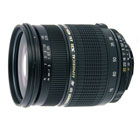 In addition to the pentaprism viewfinder, one of the key features of any digital SLR camera is the ability to change lenses.
In addition to the pentaprism viewfinder, one of the key features of any digital SLR camera is the ability to change lenses.
Most people think that the camera alone is responsible for capturing an image, but this isn't the case.
The lens that's attached to it can play a huge role in the color, contrast and clarity of every single photo that you take.
Owners of digital SLR cameras can buy lenses that match their photography style, since a landscape photographer should not use the same lens as a wildlife photographer.
The ability to swap lenses at any time adds to the versatility of a digital SLR camera, and means that even if your photography needs change in a couple years, you won't have to buy a new camera, you'll just need a different lens.
If close friends pop the question "what is a digital SLR?" you'll be able to respond in an educated fashion (just throw out the term "pentaprism" and watch their eyes go wide).
Let's take it a step further.
I am a digital SLR enthusiast - this web site probably gives that away. I think that there are many advantages of digital SLR cameras.
But I also know that there are many features of compact digital cameras that aren't available on digital SLRs.
These two articles present both sides of the coin so that you can make an informed camera-buying decision:
If you already feel quite confident that a digital SLR is the right camera for you, and have been following along with the step-by-step guide to buying a digital SLR, it's time for Step 2 - Part II: defining digital SLR terms.
A clear understanding of digital SLR jargon will help you decide which camera features you must have — and which ones you can live without.
STEP 3
Are you ready to get started on some digital SLR camera comparisons?
Before you jump in, it helps if you have some idea of what you love to photograph and what some of the camera jargon - like megapixels, ISO, live view and image stabilization - means.
Why? Because this knowledge will make your digital SLR camera comparisons 100 times easier.
Here's a pop quiz to help you out:
If you know the answer to both, then keep reading to discover the easiest way to make your digital SLR camera comparisons.
It's fun, and the goal is to save you time. If this works, you won't have to compare every digital SLR camera on the market, just a few.
Let's begin with your favorite photographic style:
If not, go back to Step 1 right now and decide which one best describes your photography style. Don't worry, I'll wait.
Got your photographic style? Good.
In the following table, the photographic styles are on the left, and the most important camera features to look for are on the right.
Find your style, and you'll see just what features you need in your digital SLR camera.
This process should make your digital SLR camera comparisons significantly easier.
Any digital SLR camera is compatible with more than one photography style.
You're not only informed about your photographic style, you also know exactly what features to look for.
There are three ways that you can tackle this step:
Maybe it's the speed of the camera, or how much it costs.
Whatever the defining feature may be, there is probably a digital SLR out there that will match your needs.
Let me say this first: the best is relative.
The cameras that I present in this section are my choices as the best digital SLRs in each category. No panel of judges was involved.
I justify my "best of" camera choices in detail, so you can see how I reached my conclusions.
If this approach is helpful to you, then find out what's the best digital SLR camera.
Rather than finding out what I think are the best cameras, or deciding ahead of time which feature is most important, you'd like to find out the specifics of each digital SLR camera.
That's what the in-depth digital SLR camera guides on this site are all about.
They'll walk you through all of the camera features, and identify the pros and cons of each one. You'll get to see plenty of photo samples taken by the camera along the way.
Once you're finished with a digital SLR camera guide, you'll have a much better sense of whether or not the camera is the best digital SLR for you.
People often ask : what is the best digital SLR camera?
My answer is always the same:
The best digital SLR camera is one that helps you take photos that you love.
All digital SLRs on the market today are very similar, and they all take great photos.
Comparing digital SLR cameras is a lot like comparing apples to apples. Faced with a large pile of apples, how do you pick the best one for you?
You can pick from a variety of apples because you know exactly what you like (i.e. crunchy, tart, green, no spots).
Finding the best digital SLR camera is not really different.
Discover Your Inner Photographer
Let's start with a self-assessment.This one won't help you quit smoking or discover your true calling in life, but it should help you pick out the best digital SLR camera for you.
The question you have to ask yourself is: What do I love to photograph?
Think of this exercise as finding your photographic sign. Once you know your sign, it will be easier for you to find a digital SLR you're compatible with.
In the next section, I'm going to list of a variety of photographic styles. See if one of them appeals to you more than the others.
Photography Styles
Action and SportsYou may not think you're an action photographer. If your joy in life is photographing children and pets, you are! They never stop moving around, and they rarely sit still for a photo. | 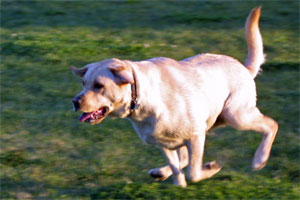 |
PortraitsFaces are fascinating to you. When you go on vacation you are more inclined to take photos of the locals than the scenery. There is something about the human face and the expressiveness of the eyes that is captivating. | 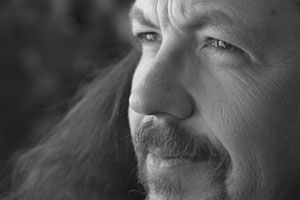 |
LandscapesLandscape photographers are somewhat opposite to portrait photographers. While the portrait person likes to interact with people, the landscaper is more at home in the beauty of nature without another single person for miles. | 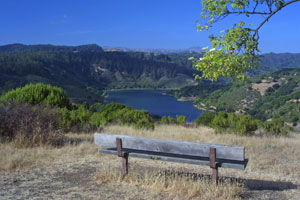 |
MacroThe devil is in the details - and you want to try to find it. Macro photography is for those who love the small things in life, and pay enough attention to their surroundings to notice all of the tiny details. | 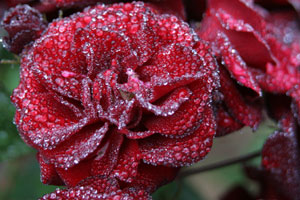 |
Night/Low LightYou enjoy prowling around in the dark or are fascinated by the way night-time can change a city. That, or you really enjoy taking photos inside dim galleries and museums. | 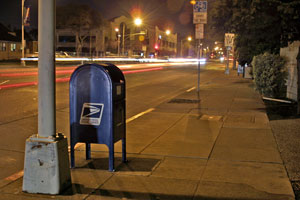 |
Travel/OutdoorYou want your camera to go EVERYWHERE with you. Whether it's hiking, biking, or jumping out of an airplane, the best digital SLR camera for you will be small and light. | 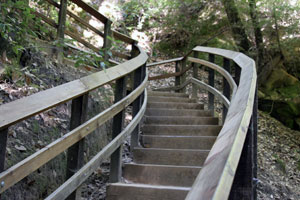 |
IndoorYou are most inclined to pull out a camera when your small child is reaching for his favorite toy. You take photos of birthday parties, dinners, and other events that occur inside a house. |  |
SpontaneousYou want to be able to react on a moment's notice, and know that speed is essential to capturing the photo of a lifetime. You have a habit of waiting until the last moment to bring out the camera. | 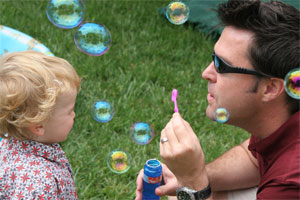 |
Planned/StudioNo photo you take is without some form of preparation. Whether it's a child's portrait or a still life of your favorite flower, you like to get everything set up so that the light, color and mood are just right. | 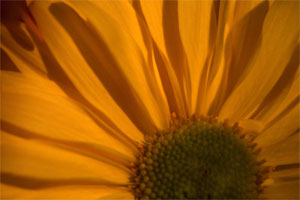 |
Pick Your Style
Before you go any further, pick your photographic style.It's OK to choose 2 or 3 styles, so long as you remember which ones they are.
Write them down somewhere so you won't forget them.
Once you start comparing digital SLR cameras, it's easy to lose track of why you needed the camera in the first place.
When you just focus on the features that help you take the photos you love, it reduces the number of features you have to evaluate.
Your Next Step — Learn Digital SLR Jargon
In Step Two you'll find out how a digital SLR camera works and how it's different from a compact camera. You'll also learn all of the latest digital SLR camera tech jargon, explained in plain English.A solid foundation in this terminology will help you match camera features to the photographic style you just selected.
End result?
You'll find the best digital SLR camera, and not just the best camera for anyone.
Nope, this will be the best digital SLR camera for you.
STEP 2
If you've been wondering "what is a digital SLR?" I'm not all that surprised.
Many consumers are much more familiar with compact digital cameras, since these models have flooded the marketplace.
Like cell phones, it's hard to walk down the street these days without seeing someone snapping a photo. Digital SLR cameras are far less common, and up until 2005 were really only used by professionals.
The good news is that the price of digital SLRs keeps falling and many are competitive now with the high-end compact cameras. This also means that many new consumers are hearing about these cameras and aren't quite sure what they can do.
So what is a digital SLR? Let's find out.
SLR Defined
SLR is an acronym: it stands for Single Lens Reflex.Now you know what SLR stands for but that doesn't really help answer the question, does it? Let's define further:
- With an SLR camera, you see exactly what the lens sees
- You can change the lens on a digital SLR
- Digital SLRs have large image sensors that produce high-quality photos
- An SLR has a near-zero lag time, and is ideal for action photography
You can take photos of everything from sleeping kittens to race cars and you'll never be limited by your camera.
With an SLR in your hands you can rest assured that you'll only miss great photo opportunities because you weren't prepared, not because your camera was too slow.
The Anatomy of a Digital SLR
To properly answer "what is a digital SLR?" you have to understand a bit about the mechanics of an SLR camera.In order to avoid getting overly technical I've simplified this diagram and am highlighting the key elements.
If you really want to dredge into the specifics, you can do that at Wikipedia.
- Light passes through the lens and strikes a mirror (green)
- The mirror reflects the light up to a focusing screen
- Light passes through the focusing screen and enters a block of glass called a pentaprism (orange)
- The pentaprism reflects the image so that you can see it in the viewfinder
- When you take a photo, the mirror flips up and a shutter (blue) opens that exposes the digital sensor (red) to light
Is ithe image that you see in the viewfinder 100% accurate? In most cases it isn't.
If you read digital SLR camera reviews, you may hear a lot about viewfinder "coverage" and "brightness".
Many digital SLR viewfinders only show you 95% of the image that will be captured by the sensor - this is what "coverage" refers to. Unless you are extremely precise when it comes to your photographs you won't notice the 5% difference.
Digital SLR viewfinders also vary in brightness, which is another way of saying how clear the image appears. "Bright" viewfinders make it easier to use manual focus, since you can clearly see the details of your subject.
A Lens For Every Occasion

Most people think that the camera alone is responsible for capturing an image, but this isn't the case.
The lens that's attached to it can play a huge role in the color, contrast and clarity of every single photo that you take.
Owners of digital SLR cameras can buy lenses that match their photography style, since a landscape photographer should not use the same lens as a wildlife photographer.
The ability to swap lenses at any time adds to the versatility of a digital SLR camera, and means that even if your photography needs change in a couple years, you won't have to buy a new camera, you'll just need a different lens.
What's Next
Hopefully you're starting to feel more comfortable about this whole digital SLR camera thing.If close friends pop the question "what is a digital SLR?" you'll be able to respond in an educated fashion (just throw out the term "pentaprism" and watch their eyes go wide).
Let's take it a step further.
I am a digital SLR enthusiast - this web site probably gives that away. I think that there are many advantages of digital SLR cameras.
But I also know that there are many features of compact digital cameras that aren't available on digital SLRs.
These two articles present both sides of the coin so that you can make an informed camera-buying decision:
If you already feel quite confident that a digital SLR is the right camera for you, and have been following along with the step-by-step guide to buying a digital SLR, it's time for Step 2 - Part II: defining digital SLR terms.
A clear understanding of digital SLR jargon will help you decide which camera features you must have — and which ones you can live without.
STEP 3
Are you ready to get started on some digital SLR camera comparisons?
Before you jump in, it helps if you have some idea of what you love to photograph and what some of the camera jargon - like megapixels, ISO, live view and image stabilization - means.
Why? Because this knowledge will make your digital SLR camera comparisons 100 times easier.
Here's a pop quiz to help you out:
- Are you an action or portrait photographer?
- What are dust control and live view?
If you know the answer to both, then keep reading to discover the easiest way to make your digital SLR camera comparisons.
The Digital SLR Matching Game
Let's play a matching game.It's fun, and the goal is to save you time. If this works, you won't have to compare every digital SLR camera on the market, just a few.
Let's begin with your favorite photographic style:
- Action and Sports
- Portrait
- Landscape
- Macro
- Night/Low Light
- Travel/Outdoor
- Indoor
- Spontaneous
- Planned/Studio
If not, go back to Step 1 right now and decide which one best describes your photography style. Don't worry, I'll wait.
Got your photographic style? Good.
In the following table, the photographic styles are on the left, and the most important camera features to look for are on the right.
Find your style, and you'll see just what features you need in your digital SLR camera.
This process should make your digital SLR camera comparisons significantly easier.
| Action and Sports |
|
| Portrait |
|
| Landscape |
|
| Macro |
|
| Night/Low Light |
|
| Travel/Outdoor |
|
| Indoor |
|
| Spontaneous |
|
| Planned/Studio |
|
Find a camera that matches your primary photographic need first, and then see how well it works for other photography styles.
Example: if you enjoy action and sports photography, consider the best digital SLR for action. This camera will also take beautiful landscapes and portraits, but if you purchase a slower camera you might be disappointed with your action and sports shots.Start Your Digital SLR Camera Comparisons
Now you can really begin your digital SLR camera comparisons.You're not only informed about your photographic style, you also know exactly what features to look for.
There are three ways that you can tackle this step:
1 - Compare By Features
If you go this route, you need to select the one camera feature that's most important to you.Maybe it's the speed of the camera, or how much it costs.
Whatever the defining feature may be, there is probably a digital SLR out there that will match your needs.
- Megapixels - if you're positive you want to print at large sizes, then you need a camera with a lot of megapixels.
- Cost - don't have Donald Trump's income? You might be looking for an inexpensive digital SLR.
- Ratings - find out what others think and which digital SLR gets the highest ratings by users.
- Size - when you don't want to lug around a brick all day, a small-sized digital SLR is ideal.
- Special Features - looking for a DSLR that captures video? This is one of many several special features.
2 - Find the Best
This approach to digital SLR camera comparisons is for those who only want the best.Let me say this first: the best is relative.
The cameras that I present in this section are my choices as the best digital SLRs in each category. No panel of judges was involved.
I justify my "best of" camera choices in detail, so you can see how I reached my conclusions.
If this approach is helpful to you, then find out what's the best digital SLR camera.
3 - Read a Guide
This technique is for those who like details.Rather than finding out what I think are the best cameras, or deciding ahead of time which feature is most important, you'd like to find out the specifics of each digital SLR camera.
That's what the in-depth digital SLR camera guides on this site are all about.
They'll walk you through all of the camera features, and identify the pros and cons of each one. You'll get to see plenty of photo samples taken by the camera along the way.
Once you're finished with a digital SLR camera guide, you'll have a much better sense of whether or not the camera is the best digital SLR for you.
Subscribe to:
Posts (Atom)



















